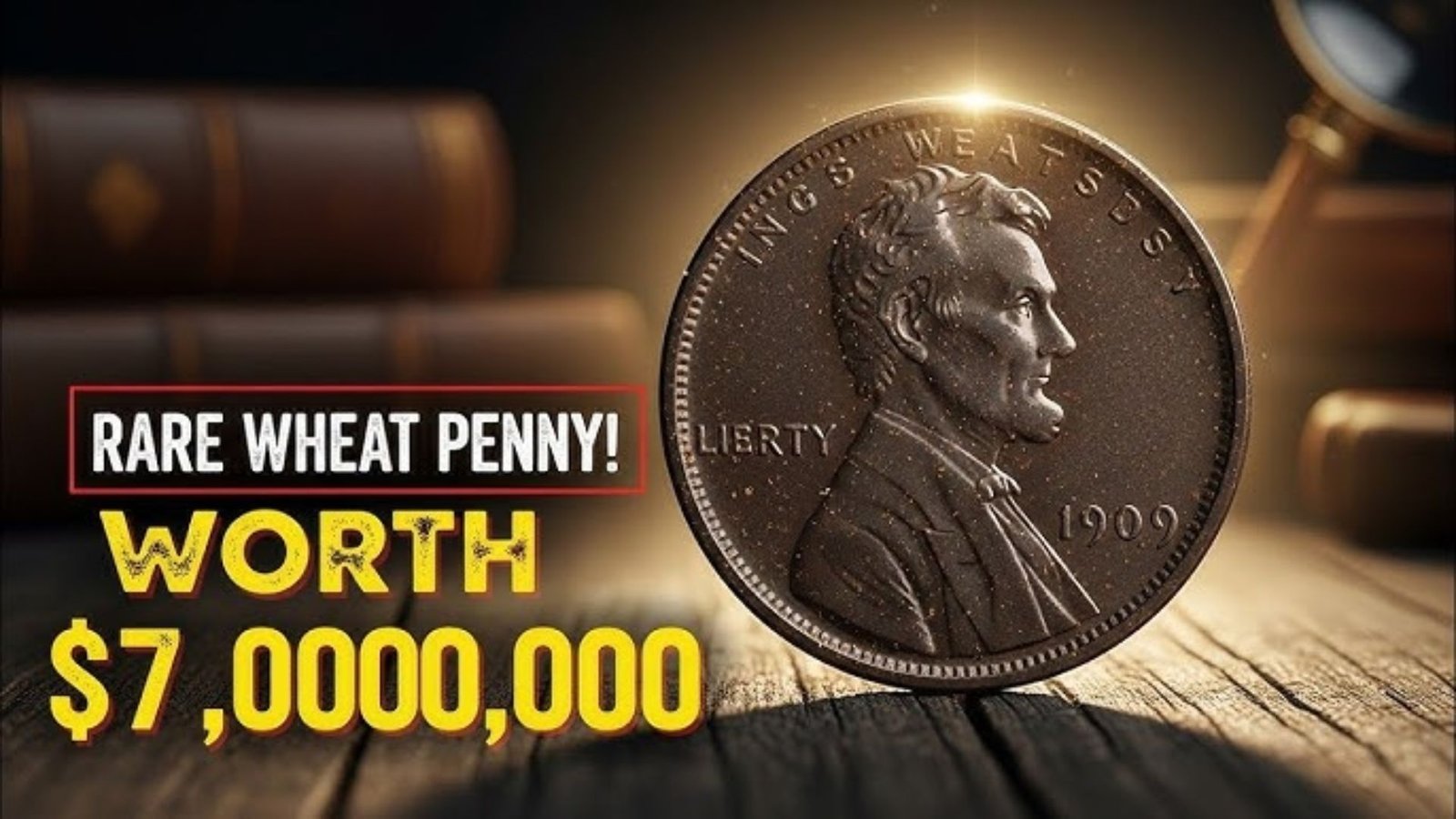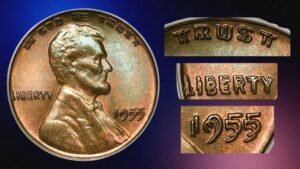If you’ve ever found an old Wheat Penny in your pocket change or inherited coin collection, don’t toss it aside just yet. Some of these humble copper coins — minted between 1909 and 1958 — are now worth thousands or even millions of dollars to collectors. Yes, you read that right — millions! Here’s how to find out if your Wheat Penny is a rare treasure and how to sell it for the highest possible price.
What Makes a Wheat Penny So Valuable?
The value of a Wheat Penny depends on three key factors: rarity, condition, and mint mark. While most are worth only a few cents, certain rare versions can turn you into an instant millionaire.
Here are some of the most valuable Wheat Pennies ever found:
- 1943 Bronze Wheat Penny – Worth up to $1 million+. This penny was mistakenly made of bronze instead of steel during World War II. Only a few exist.
- 1909-S VDB Penny – Valued around $700 to $2,500, and in top condition, over $50,000. It’s the first year of the Lincoln cent with the designer’s initials “V.D.B.” on the reverse.
- 1914-D Wheat Penny – Rare due to limited Denver mint production; can fetch $3,000–$30,000+ depending on grade.
- 1922 No D Wheat Penny – Struck without the Denver “D” mint mark; sells for $500–$15,000+.
- 1955 Double Die Obverse Penny – One of the most famous error coins, worth $1,500–$100,000+ if clearly doubled.
How to Check If Your Wheat Penny Is Rare
- Look at the Date and Mint Mark:
- The mint mark (D, S, or no mark) is located under the date.
- Key years: 1909-S VDB, 1914-D, 1922 No D, 1931-S, 1943 Bronze, and 1955 Double Die.
- Inspect for Errors or Variations:
- Doubling of numbers or letters, missing mint marks, or unusual colors can signal rarity.
- Check the Condition (Grade):
- The better the condition, the higher the value.
- Use the Sheldon Grading Scale — from Poor (P-1) to Perfect Mint State (MS-70).
- Use a Magnifying Glass or Coin Microscope:
- Fine details like die cracks, doubling, or design differences can increase value dramatically.
How to Sell Your Rare Wheat Penny for Top Dollar
- Get It Professionally Appraised:
- Send it to trusted grading services like PCGS (Professional Coin Grading Service) or NGC (Numismatic Guaranty Company) for certification.
- Research Market Value:
- Check recent sales on eBay, Heritage Auctions, or GreatCollections.
- Choose the Right Selling Platform:
- For common Wheat Pennies: eBay or local collectors.
- For rare or high-value coins: major auction houses like Heritage or Stack’s Bowers.
- Avoid Pawn Shops:
- They often offer only a fraction of true market value. Always compare offers before selling.
- Keep Proper Documentation:
- Having a grading certificate, clear photos, and transaction history adds credibility and increases buyer confidence.
Pro Tip: Clean Coins? Don’t Do It!
Never clean your Wheat Penny. Even gentle cleaning can reduce its value by 50% or more. Collectors prefer the original patina — it tells the coin’s history and authenticity.
Final Thoughts
Your pocket change might be holding a rare Wheat Penny worth millions. Whether it’s the legendary 1943 Bronze Penny or a 1955 Double Die, the right coin can transform your collection into a fortune.
So grab a magnifying glass, check your piggy bank, and who knows — you might be sitting on a million-dollar coin!
Frequently Asked Questions (FAQs)
1. How much is a 1943 Wheat Penny worth today?
A genuine 1943 Bronze Wheat Penny can be worth $100,000 to over $1 million, depending on its condition and grade. The steel version, however, is common and usually worth less than $1.
2. What makes a Wheat Penny rare and valuable?
A Wheat Penny becomes rare if it has a minting error, limited mintage, or comes from a special year like 1909-S VDB, 1914-D, or 1955 Double Die. Coins in mint condition are significantly more valuable.
3. Where can I sell my rare Wheat Penny?
You can sell rare Wheat Pennies through coin auctions, eBay, or trusted coin dealers. For high-value coins, it’s best to use certified auction platforms like Heritage Auctions or Stack’s Bowers.
4. Should I clean my Wheat Penny before selling it?
No. Cleaning a coin can scratch or remove its original surface, reducing its value by half or more. Always keep the coin in its natural state.




